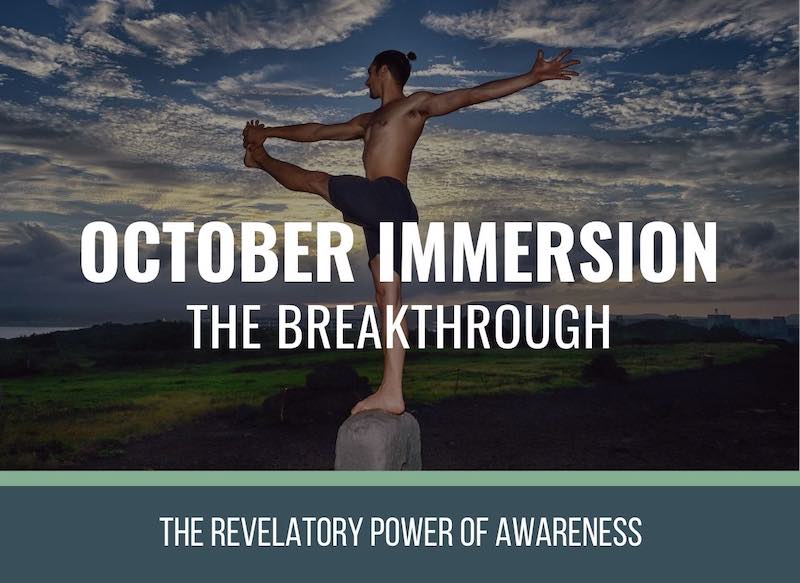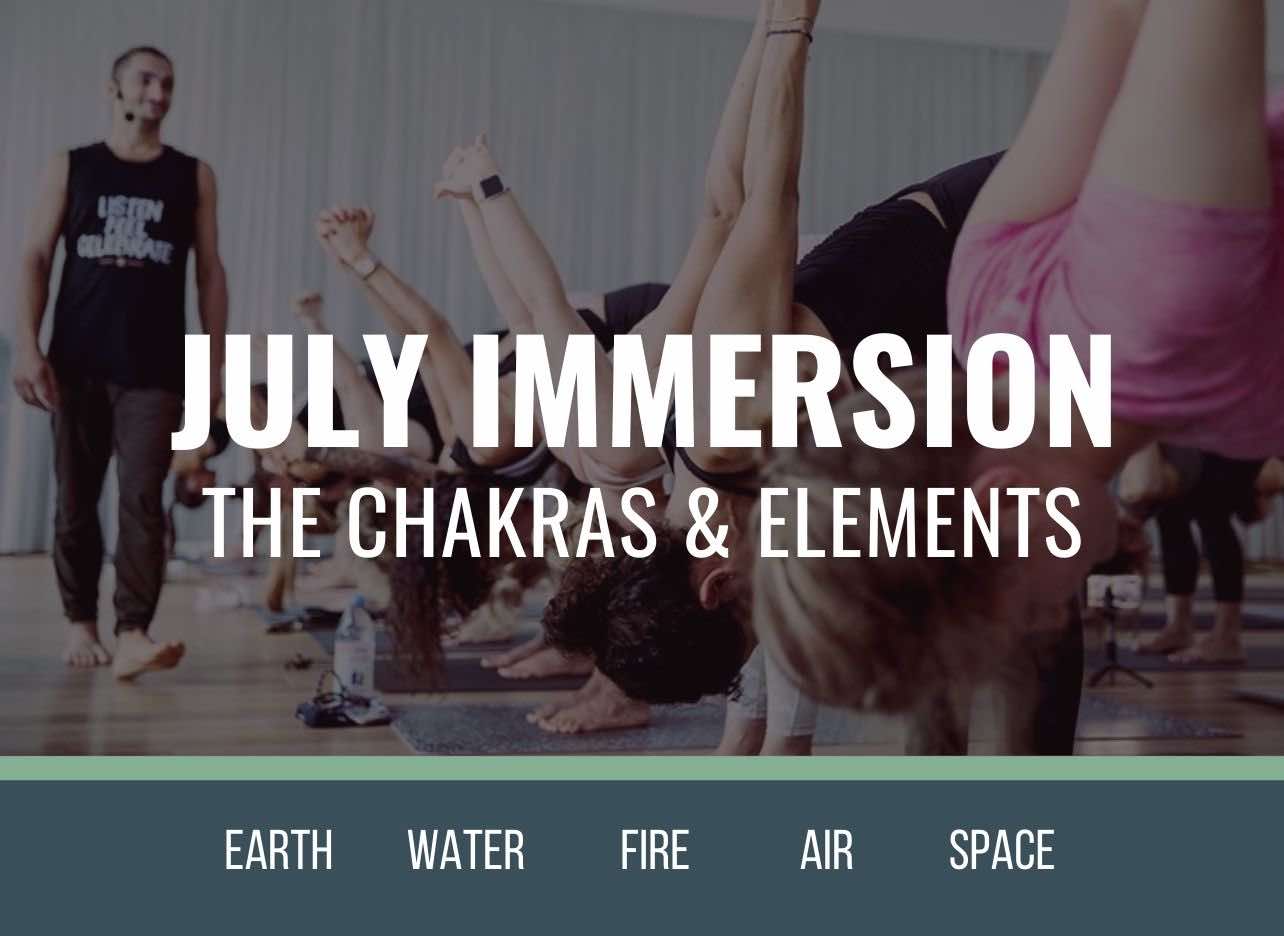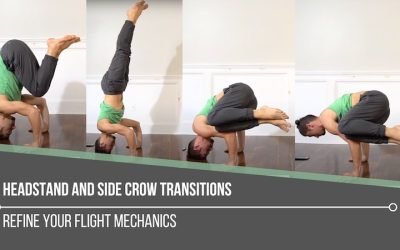Handstand ActionsLEAN, GRIP, PUSHHANDSTAND ACTIONS Handstand isn’t something we conquer in a single class, it’s a layered process that demands repetition and refinement. There are certain key handstand actions that are non-negotiable: lifting the shoulders up to the...
Arm Balances: Protraction Action
ARM BALANCE STRENGTH BUILDING
Most who practice yoga have come to realize that the practice requires a certain physical strength that doesn’t necessarily coincide with the image of strength in our head. Every yogi has seen a physically in-shape gym goer walk into a yoga class and struggle in his/her first down dog. The reason for this is because there are tons of muscles in the body, and all of them have a purpose. The ones you see on the surface are called the superficial muscles, and their job is primarily to create big movements like swinging a baseball bat, jumping, climbing, etc. While many Yoga postures and transitions require the use of these muscles, the Deep muscles or stabilizing muscles are often most used. In this video, I go over the muscle groups that I find are most important for the majority of arm balances.
Serratus Anterior
The muscles I speak of in this video are the Serratus Anterior, and the 4 layers of abdominals (rectus abdominis, external obliques, internal obliques, and transverse abdominis). Serratus Anterior is incredibly important for many arm balances because it creates stability in the shoulder blades and moves the body away from the ground. In the “Handstand Strength Training” video I give exercises in plank pose to help students develop the strength of this muscle. When this muscle is fully engaged in plank the body is further away from the ground. The same is true in arm balances. Further from the ground begins to feel lighter and easier, and as mentioned in the video above, your wrists will feel better as well. The reason you feel lighter and more at ease when the Serratus Anterior is fully engaged is simple- all muscles have an easier time contracting when they are fully shortened. Think of your bicep muscle; isn’t it easier to hold a weight in your hand when your hand is closest to your shoulder vs halfway down at the “holding a tray” position. Part of this is the relationship to gravity but even if you changed the angle of your body that would still be the easiest position for the muscles to be engaged. This is the same reason why it’s easier to do a little tiny pull-up vs going through the full range of motion from straight arms all the way up to bent arms. If you are looking to build strength in the Serratus Anterior I suggest checking out either “The Breakthrough” or “The Chakras and The Elements”. Both immersion focus on strength building for arm balances.
THE BREAKTHROUGH
FOCUS: ARM BALANCES & HIP OPENERS
- Build Upper Body Strength
- Release Hip Tension
- Learn Techniques to make hip opening and arm balances more accessible!
- Experience the revelatory "aha" moments in the postures you struggle with
- Uncover your range of motion and flexibility
- Release low back tension through hip opening
- 12 All Levels Live Asana Classes
- Lifetime Unlimited Access to All
Arm Balances: The Core
The four abdominals have multiple functions including flexion (rounding) of the spine, twisting, side bending, stabilizing, and compressing/lifting inner organs (primarily the transverse abdominis). Depending on the pose, many arm balances require one or more abdominals to engage because of the shape, and because they have the ability to make the midsection more compact. The more compact you feel, the lighter you will feel because all the extremities tend to pull in closer to the center of gravity when the abdominals engage. What I am not going over in this video is the important role that your legs play within all arm balances. I will be releasing another video on Youtube soon showing you how the legs relate to the core. If you are interested in finding out when that video goes up, subscribe to my newsletter and I will let you know. Developing strength in the abdominals has long been a part of the fitness industry, but until recently it was purely for visual purposes. Most people associate having a six-pack with health, but the reality is that it’s more important to have core intelligence than strength. A little strength and a lot of awareness go a very long way, much further than a lot of strength and little awareness of how to use it. Developing strength through applied actions such as doing handstand, crow pose, or exercises that produce greater intelligence in your body is what I focus on in my handstand and arm balance practice. As a result not only do I feel strong in my asana practice but my back feels great, and I am able to apply the awareness to other activities that require body intelligence. For my favorite core strengtheners you click here, or if you are looking for free ways to learn, simply search youtube for how to strengthen the 4 muscles of the core (searching each muscle separately). Anyone who offers an application for the strength and not just the exercise is likely thinking along the same lines of “muscle intelligence” vs strength. Remember you want to know what the muscle does intellectually and know what it feels like in your body. That combination will make it easier to apply later on to your practice!
CHAKRAS AND ELEMENTS
FULL BODY AWAKENING
- Unlock Your Hips!
- Awakem Your Arm Balance Practice
- Detailed Ankle and Feet Articulation
- Develop Low Back and Buttock Strength
- Strengthen Your Core
- Release S.I. Joint Pain
- Release Neck Pain
- The July Immersion Has it ALL
- Each Chakra & Element is Paired with an Area of the Body and Muscle Group
- 12 All Levels Live Asana Classes
- 4 Live Guided Meditations
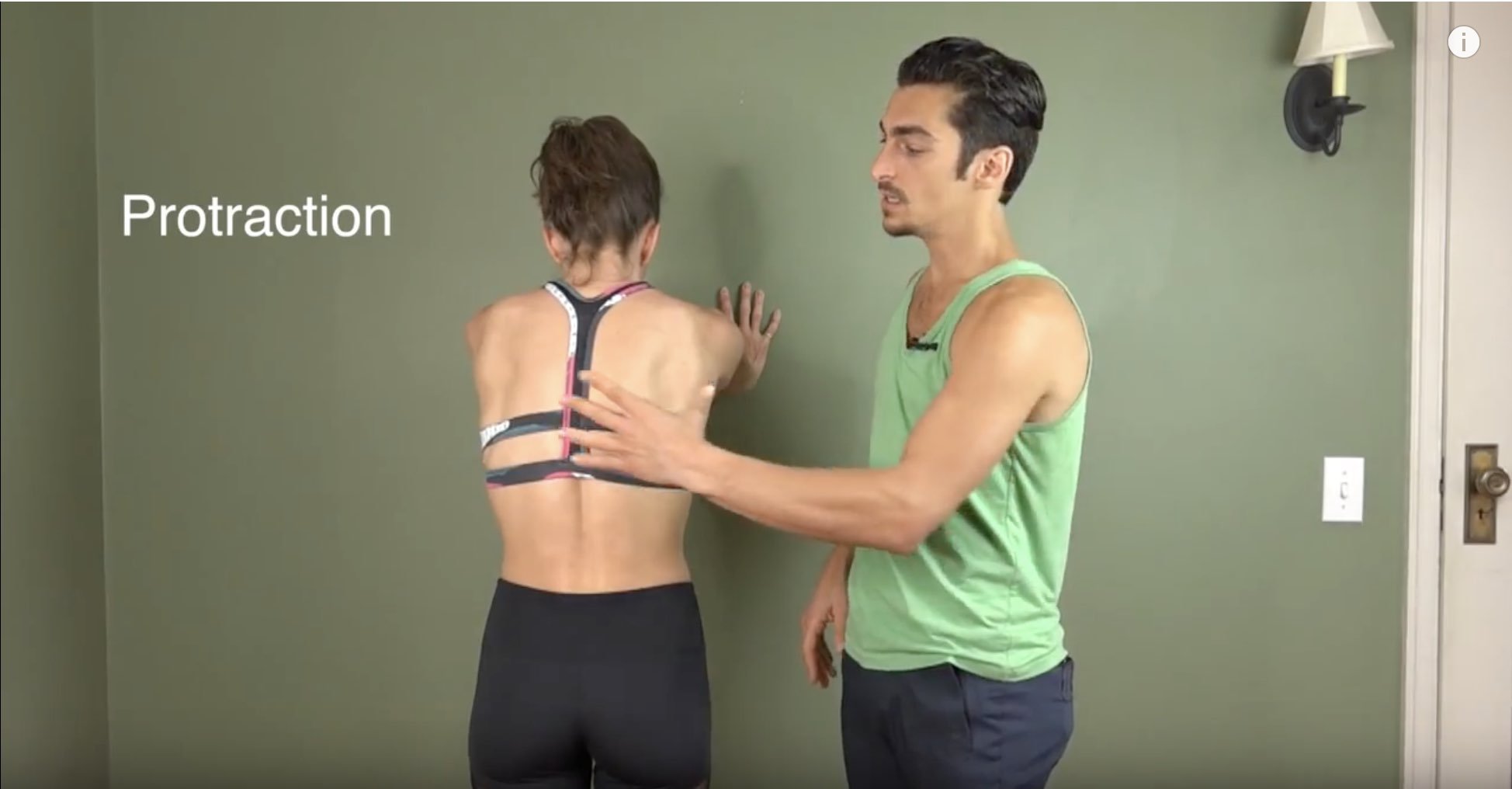
Plank at the Wall
Taking plank at the wall is one of the best ways to truly develop proprioception for protracting the shoulder blades. As mentioned in the video protraction is when you push the shoulder blades apart from one another and they move around your rib cage. This is an activation of the serratus anterior muscles which tend to require strengthening for most people. At the wall, you can focus on the action without the requirement of strength.
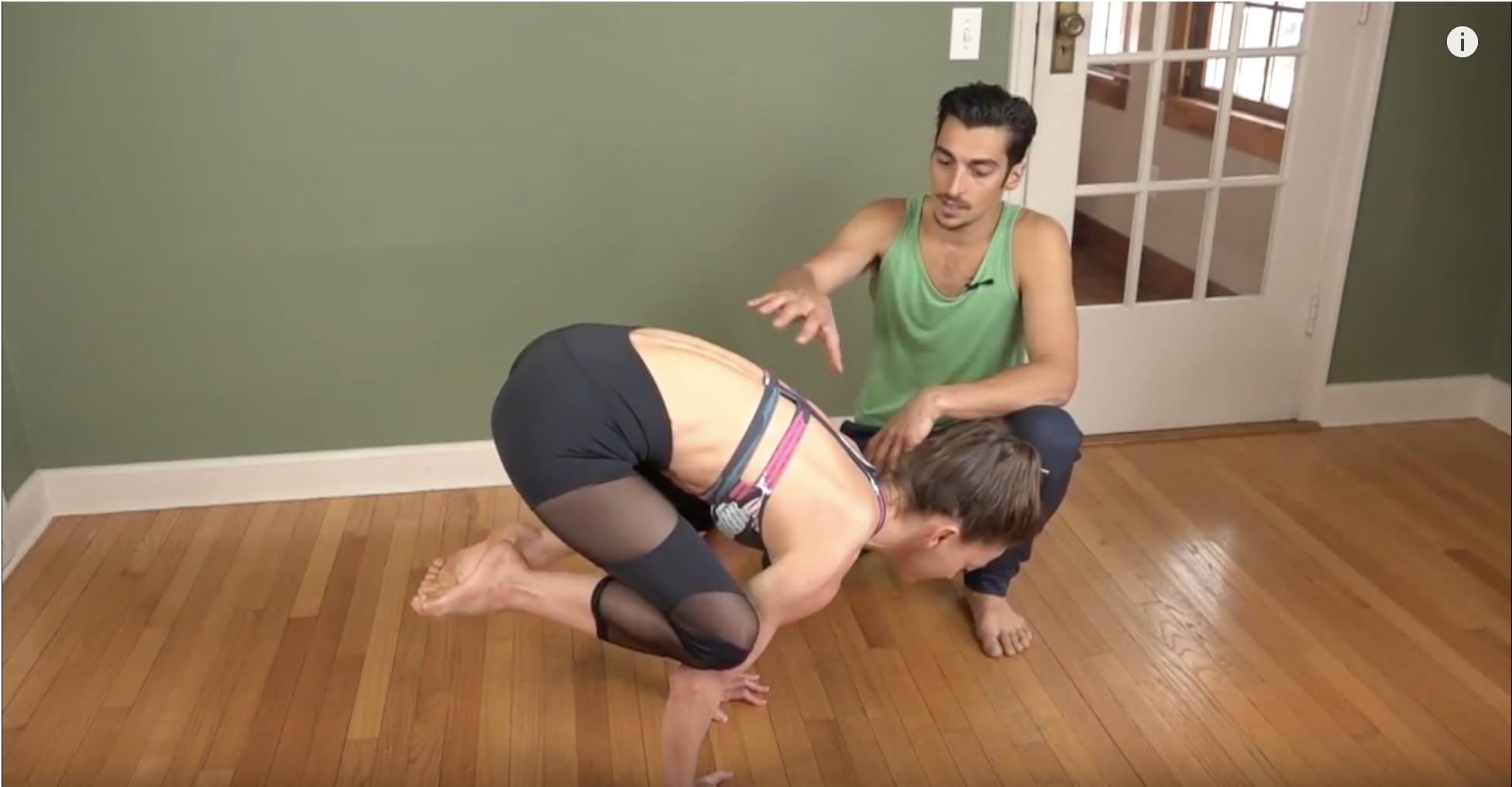
Flexion of the Spine
Flexion of the spine in arm balances requires the muscular activation of the rectus abdominals, obliques, and likely the deep core muscles. While it is possible to do arm balances with the core completely relaxed and still hold the postures, it tends to be easier with the recruitment of them. To develop strength in your core, I highly recommend my top exercises on the Handstand Training video.
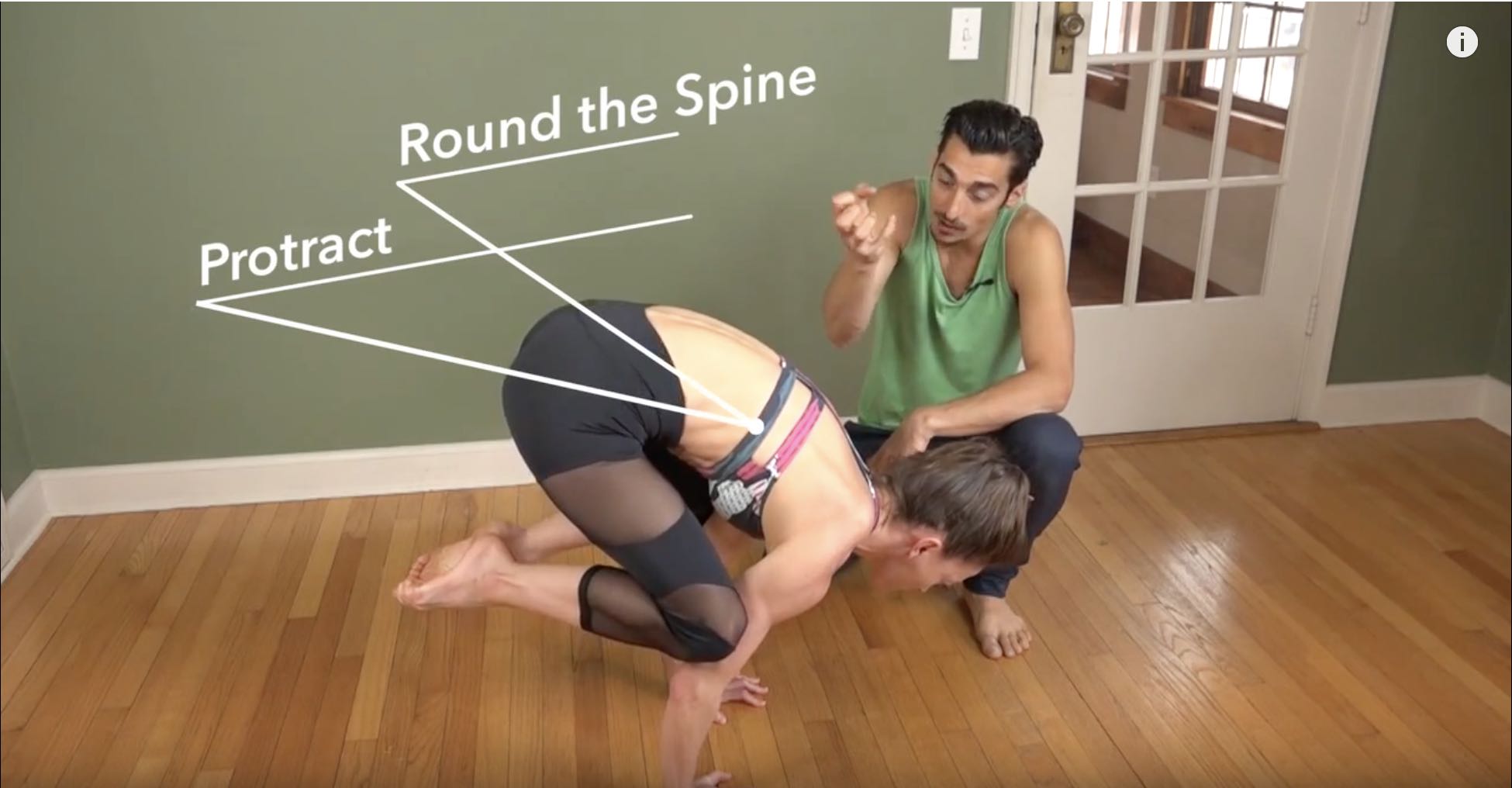
Crow With Protraction and flexion
Putting the two actions together might sound complicated but the two actions actually go hand in hand. Protraction makes spinal flexion easier to access and vice versa. I recommend first trying this in plank posture. If you haven’t yet watched the two blogs on Chaturanga, this is the best place to start integrating protraction into your arm balances. After you’ve worked with chaturanga, if you feel confident balancing crow then you can try applying these actions.
First Awareness, Then Strength.
It’s easy to try and jump ahead and go straight to our most challenging arm balance posture and try to apply new actions to it. This approach is okay but if you find that you are not getting it or not feeling a difference, it’s likely because your body needs to develop an awareness around the action itself before it can build strength. We need to create the feedback loop in our body from thought to action to sensation and back again. Once that feedback loop is established, strength can be built through repetition.
Thanks for joining me here. I hope these tips help with your practice and/or your teaching. Please share your comments, questions, or requests and I will get back to you.
-Matt
Handstand Strength Training
Learn the techniques that make Handstand fun, easy, and accessible! This collection of the top 12 most effective exercises will make you rethink how you approach handstand and what is possible, so you can finally build the proper strength and awareness it takes to hold a handstand.
Continue Learning
Handstand Actions
Handstand Mechanics
Handstand MechanicsINVERSIONHANDSTAND MECHANICS Stability, strength, and coordination come together in the pursuit of mastering handstand mechanics. One of the most critical foundations is internal rotation at the hip joints, which can aid with certain entries and...
Stable Sirsasana
Stable SirsasanaHEADSTANDSTABLE SIRSASANA Creating a stable Sirsasana is less about the final pose and more about the mechanics that lead us there. From weight transfer and spinal alignment to hamstring flexibility and shoulder engagement, each layer matters. Unlike...
Explore Hip Rotation
Explore Hip RotationSURYA YANTRASANAEXPLORE HIP ROTATION Hip rotation isn’t just an anatomical concept—it’s an open invitation to become more intimate with our body’s story. In yoga, we often live in lateral (external) rotation, especially in hip-opening postures....
Step Up Your Side Plank
Step Up Your Side PlankVASISTHASANASTEP UP YOUR SIDE PLANK Side Plank might look simple, but true proficiency starts in the details. One of the keys to refining the posture is learning how opposing muscle groups create an isometric contraction—a subtle engagement that...
Headstand and Side Crow Transitions
Headstand and Side Crow TransitionsPARSVA BAKASANAHEADSTAND AND SIDE CROW TRANSITIONS Mastery begins with mechanics, especially when it comes to headstand and side crow transitions. Each posture on its own demands control, coordination, and a deep understanding of...
THE FREE TECHNIQUE PACK
When You Subscribe, You Will Get Instant Access to
- the Technique Pack: 15 yoga pose breakdowns
- exclusive online course discounts
- exclusive blogs and videos

